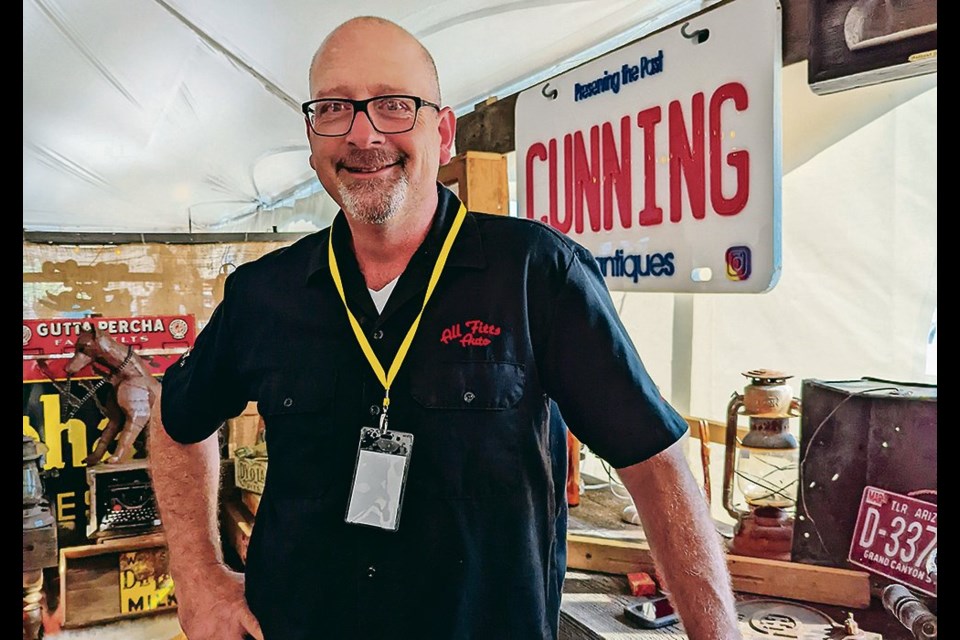WESTERN PRODUCER — “Rust is my favourite colour,” says Todd Cunningham, veteran picker and owner of Cunning Mantiques and Rusty Rose Pickins in Didsbury, Alta.
“Rust tells a story; a story of adventure and finding things.”
Anyone spending time on side-roads has seen them — barns and homesteads, farmhouses and granaries — standing out in the middle of fields, abandoned and overgrown like monuments to a life of hard work and dreams.
For a professional picker or salvage specialist, old properties like these can hold treasures, if you’re willing to do what it takes. Part antique flipping, part historical preservation, the stuff might be what’s bought and sold but the real currency is often the stories.
For his retail shop as well as his online customers, Cunningham is on the lookout for “flippables and dreamables,” the raw materials he uses to create art for his shop or cleans up and sells to other appreciative owners.
“I’ve found some of my best things in three feet of grass or two feet of snow,” he says.
Michael Gerrand of Salvage Solutions in Pincher Creek, Alta., has been in the business for 10 years, taking down everything from barns to old airport hangers.
“All I see is the care and the beauty,” he says. “Those are all dreams, people starting a new life.”
Old timbers and barnwood, the authentic materials of history, are prized by discerning builders throughout the country and both Cunningham and Gerrand have spent a lot of time climbing over and through barns and houses that time has left behind.
What unites them both — and pickers everywhere, according to Cunningham — is a deep love for old things and the stories they tell.
“I sell pieces but I sell a story,” he says. “I love things that have dust and cobwebs, things that made the labour easier and kept the lights on and were handled.”
Sitting in his garage, he is surrounded by the bits and pieces, large and small, he’s picked up over the years.
“All of these things are abandoned,” he says, looking around at old doors and windows, porch pillars, signs, hardware, fixtures and more. “They’ve been discarded and are decaying. To turn them into something beautiful and to find someone who appreciates them is the best feeling ever.”
Gerrand’s company specializes in architectural salvage, from the old growth fir of southern Alberta to the spruce beams and trusses he finds north of Edmonton.
Going into a barn or other structure is always special, he says. Although most of the barns he works on were built during the Depression by people who didn’t have a lot of money, occasionally he’ll come across something unique.
“We took down a barn recently that was very unusual,” he says. “It was called the Ontario Design and it had all this different cross-bracing. That was very beautiful.”
For Gerrand, it started with a granary and progressed from there.
“Everyone, including me, thought I was crazy when I started,” he says. “Reclaiming materials is a lot like mining — you start at the top and work your way down. You have to clear the overburden before you get to the ore.”
“The last nail the builders put in is the first nail you’ve got to take out.”
Not every prairie barn is a good candidate for picking or salvage. Some have been too damaged by weather to have any decent timbers to offer. Others have been picked over so extensively that everything of value has been taken a long time ago, repurposed for new projects by the families that worked and lived under those old rafters.
“As soon as things start leaning and falling over, you have a lot of twisting and warping,” says Gerrand.
“You have to filter what’s usable, doable, nearby and reasonable,” agrees Cunningham.
And as the face of agriculture changes, Gerrand feels the pull of history.
“I’ll get calls from some industrial ag operation that’s just bought an old homestead,” he says with a sigh. “They want it all to disappear so they can grow another 50 acres of canola. I’ll ask them about doing things to preserve the structure — the history — but nope, they want it gone.”
It’s a sentiment Cunningham recognizes from his own forays down dirt roads across the province.
“As soon as something’s gone, that’s when we miss it,” he says. “I love capturing a moment in time; what it was like for a family. That’s real nostalgia.”
Adds Gerrand: “I take the time to listen to the stories…. People are always surprised by how emotional it is for them. Every building has an amazing story.”
Cunningham agrees. “This,” he glances around the garage, “this isn’t making anyone rich. But it sure is making us happy.”

